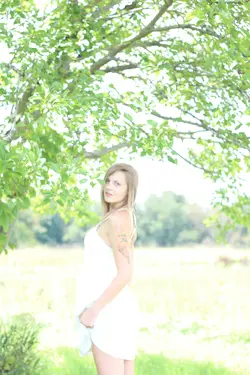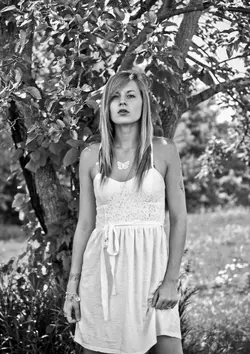Darrel, thanks for the tip on the shutter speed, I thought I read, or heard, somewhere that depending on the lens your wanted your shutter speed at least one notch faster (ex. 50mm = 1/60th / 250mm = 1/320th). I had no idea that the higher your aperture the more susceptible to blur you were. I kept meaning to use a tripod just to be safe, but again with so much moving I found it difficult with my cheap-o tripod. Going into it next time I will definitely be making sure it's up to 400-500, with that lighting I definitely could have afforded it!
You generally grasp the relationship between shutter speed and focal length, but remember that a) this is a guideline (it has exceptions) and b) it is a recommendation for
minimum shutter speed to prevent blur due to
camera shake. Imagine you're shooting a still life of a bowl of fruit - this is a good starting point to get a sharp image. Experienced shooters with good form can shoot at a slower shutter speed and get a sharp image, someone with jittery hands may need an even faster shutter. On the other hand, this guideline doesn't really have any relation to blur due to
motion of the subject. Often even higher shutter speeds are needed to freeze subject motion.
The large aperture doesn't make you more susceptible to blur, per se, but it does make it easier for your subject to move out of the range of acceptable focus. You may very well have a quick enough shutter to have frozen the image, but the subject has moved out of the focus range. With such a large aperture you may only have a depth of a few inches in which the image will appear sharp. For example, if you press your shutter button halfway to get focus lock on her eyes, then she rocks forward a little before you press the rest of the way to capture the image, her eyes may have left that range of sharpest focus. Yes, she is now "out of focus" because she moved, but not because she moved while the shutter was open. You can combat this by using a smaller aperture, which has a larger depth of focus (a slight rocking forward is less likely to get her eyes out of the range of acceptable focus).
One suggestion which I haven't seen yet in this thread is to read up on the Exposure Triangle. Forgive me if you have read up on it (it does seem like you've done a lot of research on your own), but that is recommended reading when someone has exposure issues. By your own admission you have overexposed the first three images. Per the Exposure Triangle, there are three things you can do to change exposure - change your shutter speed, your aperture size, and your ISO setting. Since these images were overexposed, you needed to capture less light. You could have used a faster shutter speed (which would have helped any blur issues), you could have used a smaller aperture (which would have increased your depth of field as well), and/or you could have used a less sensitive ISO setting (though you were already at 100). Learning how each affects the final image will allow you to get a proper exposure while maintaining the artistic vision you intended. Personally, for this type of shot I would first set my aperture to get the depth of focus I wanted - find that happy medium between getting my model in focus and blurring the background. Then, if motion is still an issue, I would adjust my shutter speed. After making these changes, if the image were underexposed, only then would I bump up my ISO (higher ISO settings tend to induce more noise). Conversely, there may be times you want to capture a certain amount of blur (so set your shutter speed first), or maybe you even want to create noise for stylistic reasons (so start with a high ISO setting) and adjust from there.
















![[No title]](/data/xfmg/thumbnail/42/42463-03457f0869c7510e6fb947b21de31aba.jpg?1734176998)
![[No title]](/data/xfmg/thumbnail/30/30863-8c53522e4ed851e96cb7411e74b9fe59.jpg?1734158825)

![[No title]](/data/xfmg/thumbnail/37/37524-6c51828efbc2361f9cfed53f63f28aa2.jpg?1734170684)






